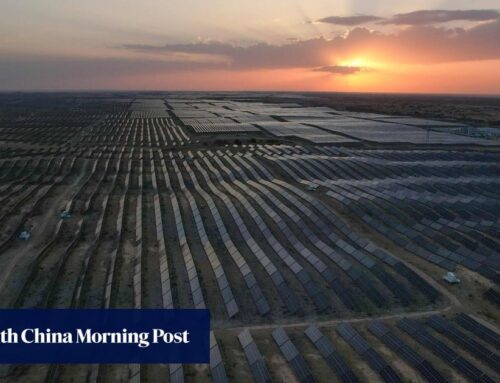Good News for the Environment: How Organic Farming Could Play a Critical Role in Combating
April 8, 2025
According to a Phys.org article, organic farming is gaining attention after researchers found a novel link between organic farming and soil carbon storage. Scientists are looking for strategies to boost carbon absorption as global temperatures continue to climb and more damaging carbon enters the atmosphere. Reducing the amount of carbon in the atmosphere will make the Earth healthier for all.
Kansas State University researchers have been investigating the effects of various farming methods on the soil’s capacity to store carbon. The researchers came to the conclusion that soil treated with compost or manure fertilizer stores more carbon than soil treated with chemical fertilizers or no fertilizer at all after comparing their findings. Although earlier studies on soil carbon capture have also shown that organic farming practices enhance soil carbon capture, the KSU researchers uncovered something else: how the carbon is kept in the soil. Their results show that the carbon is stored in pores and that part of it binds to soil minerals.
Additionally, the researchers used ultrabright synchrotron radiation, which is brighter and more powerful than X-rays, to see how the carbon bonded to the soil particles. Additionally, KSU researchers used the Advanced Light Source in Berkeley, California, and the Canadian Light Source at the University of Saskatchewan to analyze soil from a cornfield in Kansas that had been farmed for the previous 22 years with no tilling and only manure/compost fertilizer. In the Soil Science Society of America Journal, the study highlights the advantages of sustainable agriculture. It emphasizes how carbon sequestration from organic compost and manure not only improves soil health but also directly combats global warming.
According to Rowan Hollinger of Canadian Light Source, Dr. Ganga Hettiarachchi, a professor of soil and environmental chemistry at KSU, stated that when we work together, studies like this will help us advance toward more sustainable, regenerative agricultural practices that will both help feed expanding populations and safeguard our soils and environment. Furthermore, Hettiarachchi added that knowing the functions of the many minerals, chemicals, and microorganisms involved will enhance models that forecast the effects of various farming methods on soil carbon storage.
Why should Americans pay more attention to organic farming?
Just 1% of all acreage in the US is used for certified organic farming. On the other hand, between 9 and 10 percent of cropland in the EU is certified organic. Organic acreage is around 14% and growing quickly in Sweden and Germany. Additionally, the USDA vehemently opposes the 2020 EU program known as Farm to Fork. By 2030, it demands that all member nations have 25% of their cropland be organic and that all chemical inputs be cut by 50%. All member states must create national strategies to accomplish these objectives under Farm to Fork, and the EU has allocated funds to ease the transition.
The opposition to organic production is far stronger in the US, notwithstanding recent opposition to Farm to Fork in the EU. Organic success in the EU can be traced to the establishment of organic standards more than 50 years ago. Farmers worldwide needed a precise definition of organic labeling. Maine Organic Farmers and Gardeners Association was the first certification body in the United States to adopt its organic standards in 1971. California Certified Organic Farmers followed in 1973, with Oregon Tilth developing guidelines in 1974. Over time, regional organic farming certification agencies emerged around the world.
According to the national USDA organic standards, regional efforts were farmer-led to create fair markets for organic products and encourage organic practices. Farmers exchanged expertise and encouraged one another to be more organic. Farmers shared the idea of constant improvement. The USDA established a National Organic Standard in 2000, mandating regional certifying bodies to follow the same criteria, but producers were unable to raise the standard above the national level.
Search
RECENT PRESS RELEASES
Related Post




